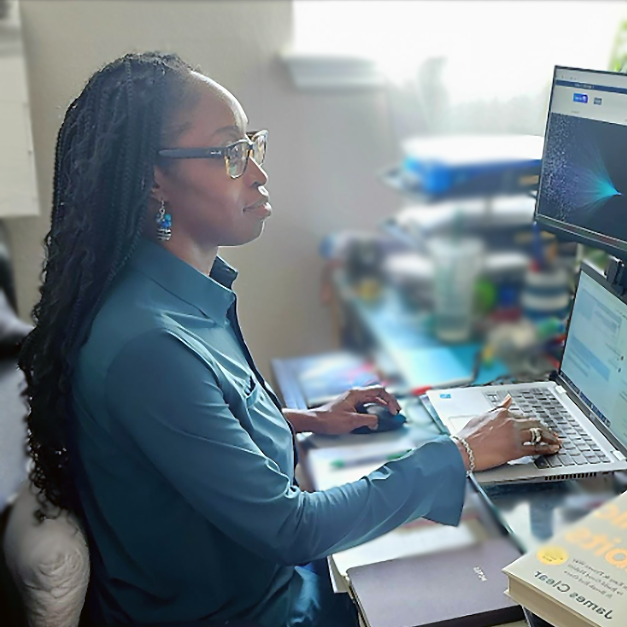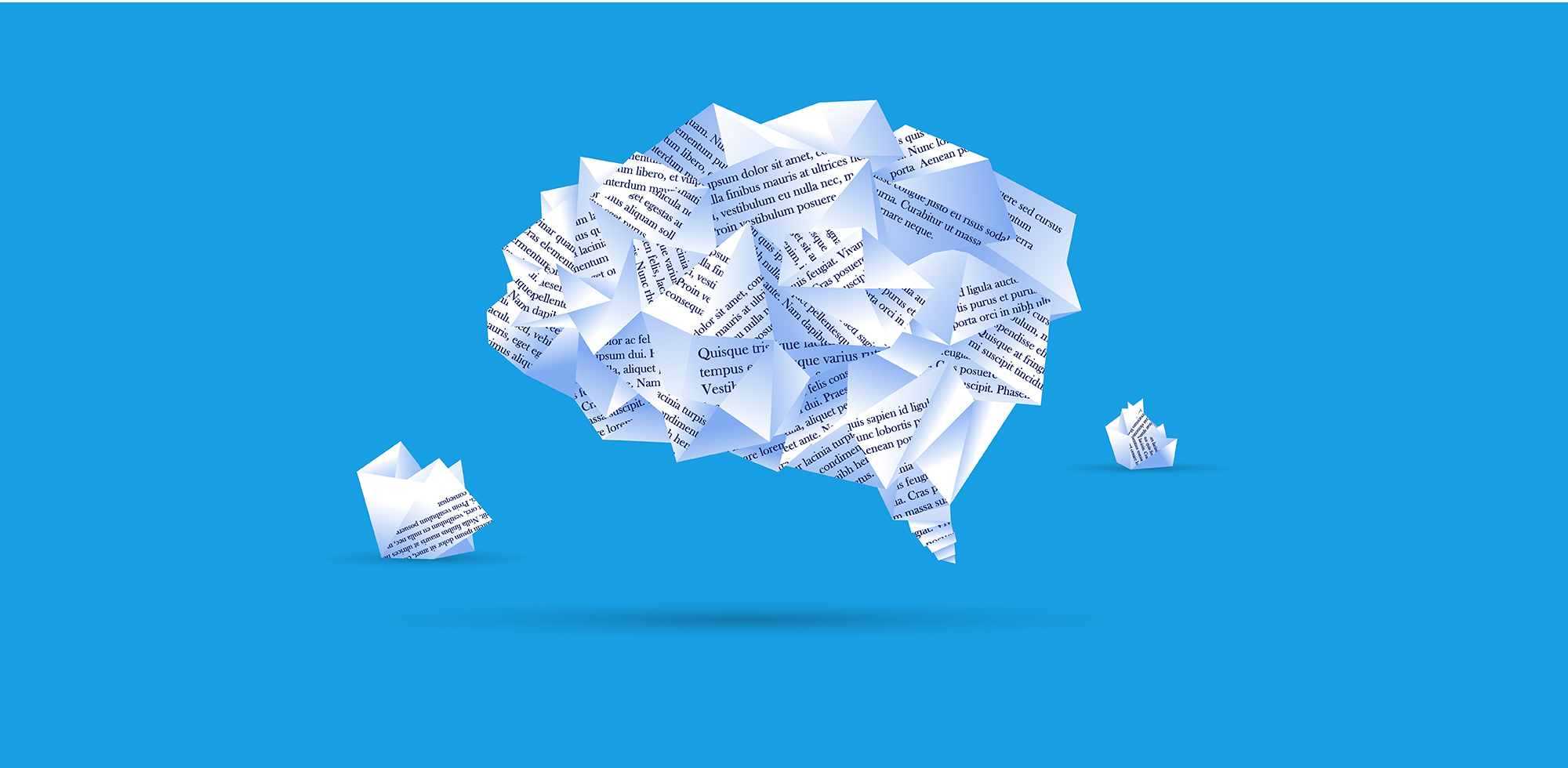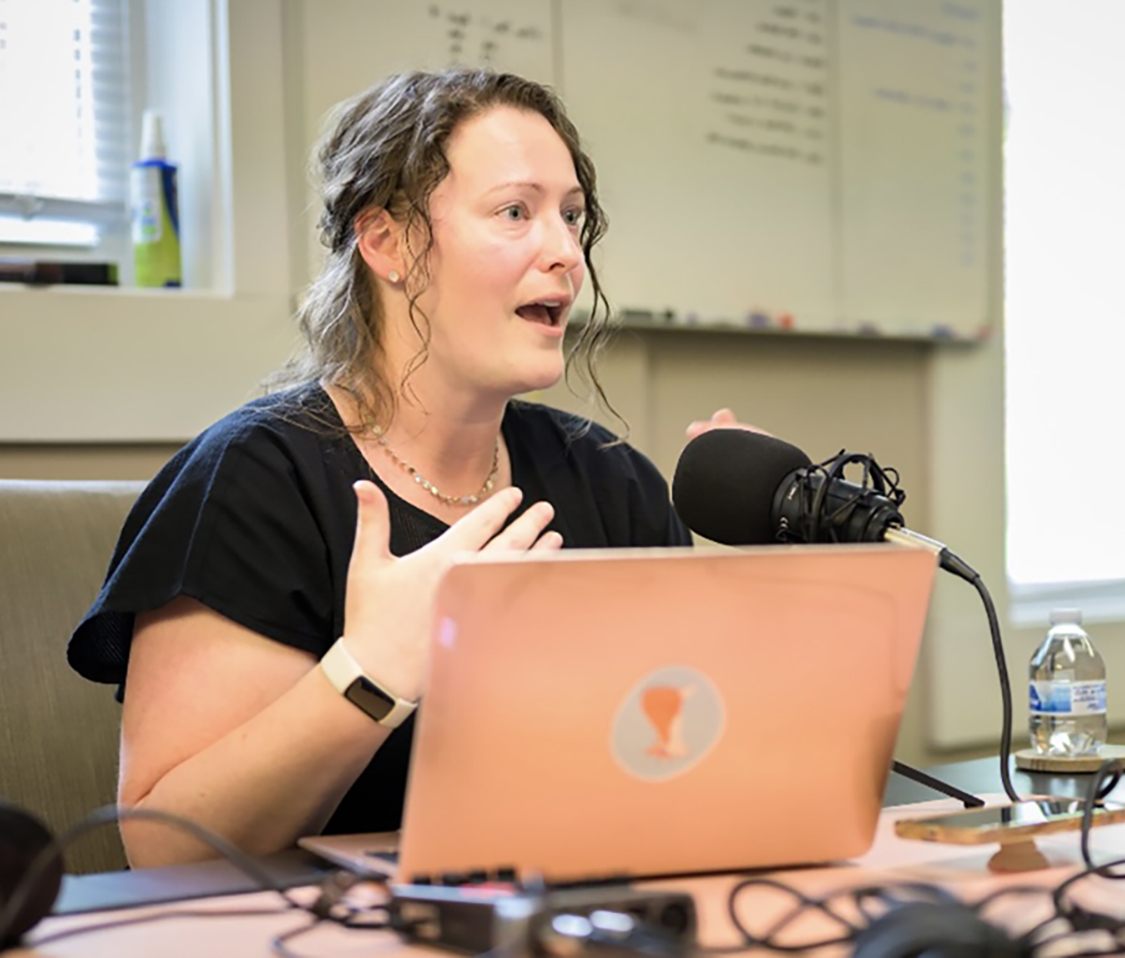How a biomedical researcher–turned–scientific writer sharpened her regulatory knowledge at UChicago.
As a scientific writer at Integrated DNA Technologies (IDT), Dr. Morayo Adebiyi-Uchendu took note of the numerous review layers each document she wrote underwent as it moved forward to the compliance teams. “We involve regulatory affairs and legal teams for everything,” she says, referring to the gamut of communications the biotech manufacturer publishes about their CRISPR tools and RNA products. “There’s the science behind each of these products, but there’s also the manufacturing and regulatory side that makes sure each product is compliant, effective, and consistent from lot to lot.”
Despite her PhD in biomedical sciences, the world of regulatory frameworks was new to her, and it didn’t take long to realize that understanding it more deeply would strengthen her contributions to IDT’s projects. That’s why she enrolled in the University of Chicago’s Regulatory Writing certificate program.
Adebiyi-Uchendu’s passion for writing started while doing her PhD on sickle cell disease research. Many of her peers saw manuscript writing as a necessary chore, but she found herself energized by the whole process—from planning and writing to designing figures and even guiding papers through publication. After graduation, she started a scientific consulting firm through which she helped biotech companies and healthcare agencies unpack complex ideas for different audiences. Three years later, she joined IDT as a scientific writer.
“Any public-facing content we publish is fair game for an audit,” she says. “This means every product description, technical document, or scientific paper needs to be written with regulatory compliance in mind, whether it’s for social media, marketing materials, or scientific publications.”
The Regulatory Writing certificate gave her the tools to write to that standard. The introductory course opened her eyes to the breadth of regulatory frameworks and how, beyond informed-consent forms and distinct pathways for devices and biologics, regulation underpins nearly all of what companies make and communicate.
The Regulatory Intelligence course, meanwhile, taught her to navigate FDA databases and understand the manufacturing practices that lead to product consistency. “Devices, biologics, and chemicals don’t just differ scientifically,” she says. “They move through different regulatory gates, and learning to tell those stories precisely is an important part of making the writing I do effective.”
The program’s Saturday schedule let her balance coursework with her full-time role, while IDT provided a scholarship for her second course after recognizing the certificate’s value.
Adebiyi-Uchendu sees how the Regulatory Writing certificate opened her up to a variety of different career paths. “I initially thought about a complete career change into regulatory writing,” she says, “but I realized the certificate lets you combine regulatory knowledge with whatever scientific expertise you already have.”
In fact, she was able immediately to fold her new knowledge into the work she was already doing at IDT. After learning about standardized regulatory templates, Adebiyi-Uchendu collaborated across various teams to generate a template system for IDT’s research, regulatory, and marketing teams. “These are templates that we can use so that all of our materials can be compliant,” she explains. “They made documentation clearer and consistent across departments.”
The certificate did inspire one new venture, however: a biweekly LinkedIn newsletter that brings together scientific knowledge and regulatory insight. Her first article covered the EU’s ban on the chemical TPO in gel nail polishes and explained both the compound’s classification as a reprotoxin and the regulatory framework that forced its removal from shelves. Her second article examines the role of AI in solving critical needs in healthcare and unpacks how regulatory agencies are responding to this new technology. “The certificate gave me the confidence to launch this newsletter,” she says. “It’s a great way to engage my community online while also giving me an opportunity to more deeply understand the ways science and regulation intersect.”
Now serving on the Certificate Programs Student Advisory Board, Adebiyi-Uchendu guides other scientists and writers considering similar transitions. She helps them see how regulatory skills apply across manufacturing, clinical trials, medical communications, and scientific writing, and how requirements that initially seem constraining actually add precision and clarity to their work.

A Field of Possibilities
Medical writing offers a wide variety of job roles, clients, and opportunities. It combines a love of science and writing while having a powerful impact on the well-being of others.
Learn more about Medical Writing and Editing




